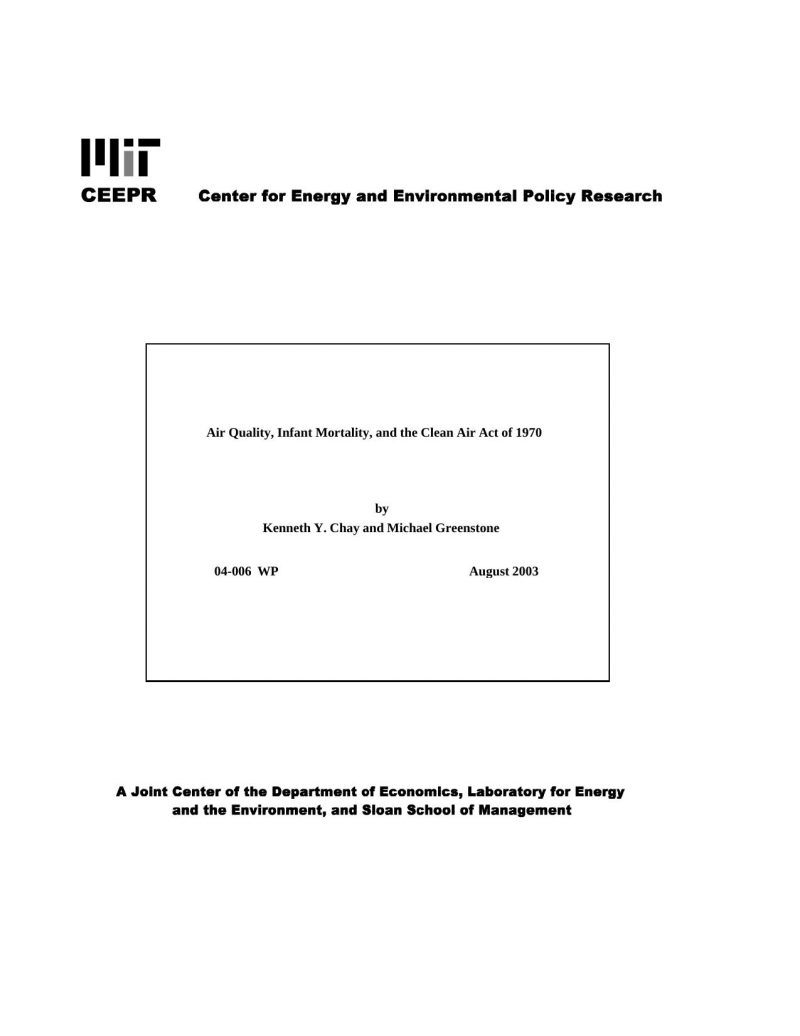Air Quality, Infant Mortality, and the Clean Air Act of 1970
Kenneth Y. Chay and Michael Greenstone
03-Aug
We examine the effects of total suspended particulates (TSPs) air pollution on infant health using the air quality improvements induced by the 1970 Clean Air Act Amendments (CAAA). This legislation imposed strict regulations on industrial polluters in “nonattainment” counties with TSPs concentrations exceeding the federal ceiling. We use nonattainment status as an instrumental variable for TSPs changes to estimate their impact on infant mortality changes in the first year that the 1970 CAAA was in force.
TSPs nonattainment status is associated with sharp reductions in both TSPs pollution and infant mortality from 1971 to 1972. The greater reductions in nonattainment counties near the federal ceiling relative to the “attainment” counties narrowly below the ceiling suggest that the regulations are the cause. We estimate that a one percent decline in TSPs results in a 0.5 percent decline in the infant mortality rate. Most of these effects are driven by a reduction in deaths occurring within one month of birth, suggesting that fetal exposure is a potential biological pathway. The results imply that roughly 1,300 fewer infants died in 1972 than would have in the absence of the Clean Air Act.



